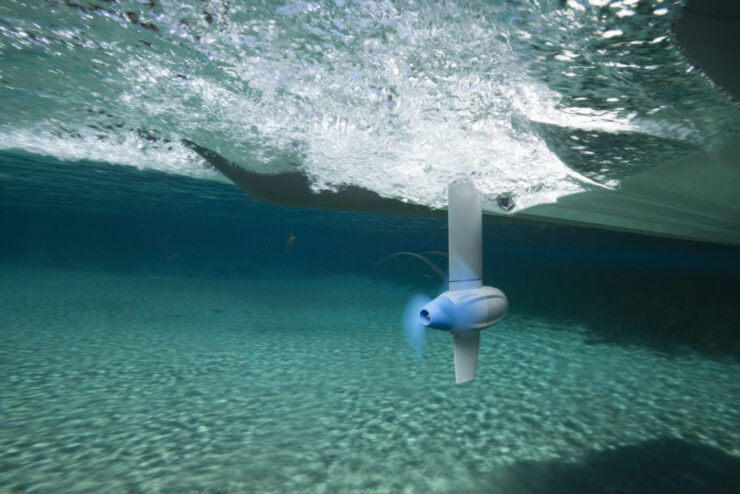Outfitting your vessel can be a daunting task. It requires careful consideration of several different factors, from selecting the right type of equipment to ensuring its compatibility with existing systems onboard and beyond.
With the right preparation, however, you can make sure that your vessel is safe and ready for whatever waves may come its way. In this article, we will discuss some key considerations when outfitting your vessel to ensure maximum preparedness for any situation on the water.
Well, look at what types of gear are necessary for various conditions, how to properly install them, and how to best utilize these items to stay afloat no matter what comes up.
Inspect and Maintain Your Vessel
Inspecting and maintaining your vessel is essential to ensure a safe and enjoyable sailing experience. Before heading out on the water, take time to check that all equipment is in proper working condition.
Inspect halyards, sheets, shackles, blocks, and rigging hardware for any signs of wear or damage. Make sure all fasteners are tightened properly and replace any that have become corroded or worn down.
Check the engine oil level and fuel supply regularly as well as inspect the cooling system for leaks or clogs. Change filters when necessary and listen for unusual noises while running the engine at various speeds.
Additionally, inspect steering cables periodically to make sure they are not fraying or becoming detached from pulleys upon turning them by hand. If you keep up with regular inspections of your vessel’s components you can save yourself costly repairs further down the line and avoid unwelcome surprises while out at sea!
Invest in Appropriate Safety Gear
:quality(70)/cloudfront-us-east-1.images.arcpublishing.com/archetype/3HX3RXVEUZCRXBHFPXH6HE45OA.jpg)
Outfitting your vessel for the waves is a process that should not be taken lightly. Investing in appropriate safety gear is essential to ensure you have the best protection and peace of mind while out at sea.
This includes items such as life jackets, flares, flashlights, and communication devices to stay safe on board your boat. It also means investing in quality materials like durable fabrics and weather-resistant paints to keep your vessel seaworthy during storms or harsh conditions.
Moreover, make sure all equipment aboard the boat is regularly checked and maintained so it can work properly when needed. Outfitting your vessel with suitable safety gear helps you remain safe from any potential hazards on the water while giving you confidence that you are prepared for anything encountered during an outing
Stock Essential Supplies for Emergencies
When outfitting your vessel for a long voyage, it is essential to stock up on emergency supplies that can help you and your crew get through any tough situation. This includes having enough food, water, and medical supplies stored away in case of an emergency.
Additionally, having the right safety equipment such as life jackets, flares, radios, and navigation devices is crucial for staying safe while at sea. Having the proper tools needed to repair any damage suffered by your boat or make necessary repairs should also be considered when stocking up on essential items.
Finally, making sure all necessary documents are present onboard such as insurance papers and navigational charts will help protect against potential legal issues that could arise during the journey. All these items should be considered when preparing for a voyage so you can feel comfortable knowing you have what it takes to stay safe no matter how unpredictable the waves may be.
Plan for Adverse Weather Conditions

When outfitting your vessel for an excursion, it is important to plan for adverse weather conditions. Adverse weather can bring high winds, heavy rain, and choppy seas.
To stay safe and in control of your boat, you should make sure to have the right gear onboard that will help you navigate through any type of stormy situation. Start by investing in quality foul-weather clothing and accessories such as waterproof boots, gloves, jackets, and trousers – these are essential for keeping dry when on deck even during rougher conditions.
Additionally, a reliable GPS with current charts would be beneficial so that you can remain informed about changing marine weather patterns while out at sea. Lastly, consider equipping yourself with tools like radar reflectors or radar transponders if available – this way if visibility becomes low due to fog or darkness you will still be easily identifiable by other vessels nearby or land authorities.
Preparing properly is key to having a successful voyage despite the unpredictable nature of the ocean waves!
Consider the Effects of Currents and Tides
When outfitting your vessel, it is important to consider the effects of currents and tides. Currents refer to the horizontal movement of water while tides are caused by the gravitational pull of the moon and sun on Earth’s oceans.
Depending on their location, vessels may be exposed to strong currents or large tidal changes that can affect maneuverability and safety at sea. By understanding these forces in advance, you can make more informed decisions about how best to outfit your vessel for a successful voyage. For instance, if you anticipate encountering strong currents along your route, you may want to invest in stronger anchors or moorings that won’t give way easily.
Additionally, accounting for tide levels when planning any coastal cruising will ensure that you don’t find yourself grounded during low tide due to an inadequate draft depth. Careful consideration of both current and tide conditions should always be taken into account when preparing for a trip out on the water so as not to leave any unforeseen surprises waiting just around the corner!
Conclusion

When outfitting your vessel with the best possible equipment for the waves, there are many factors to consider. One of the most important is selecting a quality fender system that can protect against impact and shock from heavy seas, such as Yokohama pneumatic fender. A well-equipped boat should also have reliable navigational systems, instruments to measure sea conditions, and communication devices in case of emergencies.
These components will ensure that youre ready for any stormy weather while still enjoying a safe journey with your vessel.

